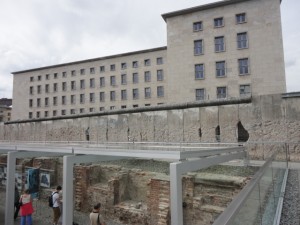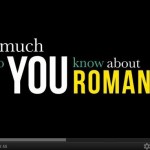The Rise and Fall of the Berlin Wall
After Germany was defeated, the allies had a conference on May 9, 1945 to divide Berlin. Berlin sits in eastern German and whoever controls Berlin, controls Germany. Germany helped create two world wars so they do not want to leave the government to be in control of Germany again. Therefore the allies decided to split Berlin, so they controlled different areas of Germany and they could therefore rule it as they wanted to.
The allies split the north east Berlin to the Soviets, south west to US,A the West to Britain and France. West Germany was a lot freer and stronger than the east which led to the “Brain Drain” of doctors, nurses, students fleeing the east. 3.5 million people left East Germany between 1949 and 1961. The Iron Curtain that had gone up dividing East and Western Europe, meant the one way people could go through to the west was through Berlin.
On the night of August 13, 1961, the Berlin wall was put up. At first it was barb wire and then after it was cement bricks. If you were a West German and had been visiting friends in East Germany, you were now stuck on the wrong side of the border and if you tried to cross over, you would be killed. For a year after the wall when up, there was no way to go from East Berlin to West Berlin. In December 1962, they allowed people through for the first time, then they allowed some people a 3 day travel visa but there were many travel restrictions during the time of the Berlin wall.

Life in Eastern Germany was very different to that in the West and it was hard for those not to be able to see their relatives. More than 1,000 people died trying to cross the border between 1961 and 1989. East German was called German Democratic Republic or GDR for short. It was politically incorrect to call it East Germany. The East Germans all had jobs, there was no poverty, they all lived in similar sized Berlin apartments, rent was only 5% of household’s income and food basics and transport was frozen at their 1936 level. But there was a lot of monitoring and surveillance, if you were not abiding by the East German rules and spoke about anything Western, you could be put in prison.
Towards the late 1980s, the political structure of the Soviet Union began to crumble. The Soviet Union no longer had the funds to give to the Eastern Government in the other countries such as Czech, Ukraine, Romania where there were all dictatorships. The only way to continually suppress people is to keep funding the Eastern regimes. East Germany did not have any money and had to keep borrowing from West Germany, which meant by 1989 it was indebted to the West of about 11 billion US dollars.
On the 750th anniversary of Berlin, Ronald Reagan challenged Gorbachev on 12th of June 1987 to tear down the wall. Gorbachev realised something had to change. The Soviet Union did not have the tanks to crush the uprisings. In the summer of 1989, Hungary disabled its physical border defences with Austria and East Germans escaped to the west via Prague. In September,1989 protests broke out all over Eastern Germany and at one time, 50% of the people in East Berlin were protesting in the streets. On the 9th of November the Government therefore decided to grant temporary travel visas into the west which they announced at a press conference November 9, 1989 without any warning.
People rushed to the checkpoints. There were only 2 guards for about 2,000 people. The guards did not know what to do, they eventually stood down at 10:45 that evening and let everyone through with little or no identity checks. The famous scene of people on the wall is by the Brandenburg gates. People celebrated their new found freedom throughout the night.

Now nearly 23 years on, Eastern Berlin is a thriving part of the city. There are still remnants of the wall to remind people of what it was like. One of the most famous places is the East Side Gallery where artists have painted all along the wall.. Checkpoint Charlie is a tourist attraction and was the only way foreigners could come into Eastern Germany. There is a replica of the checkpoint and tourists can have also have their photo taken with an “American” soldier.


If you are planning a trip to Berlin, check out the wide range of apartments in Berlin from Worldwide Accom, to suit any budget.


